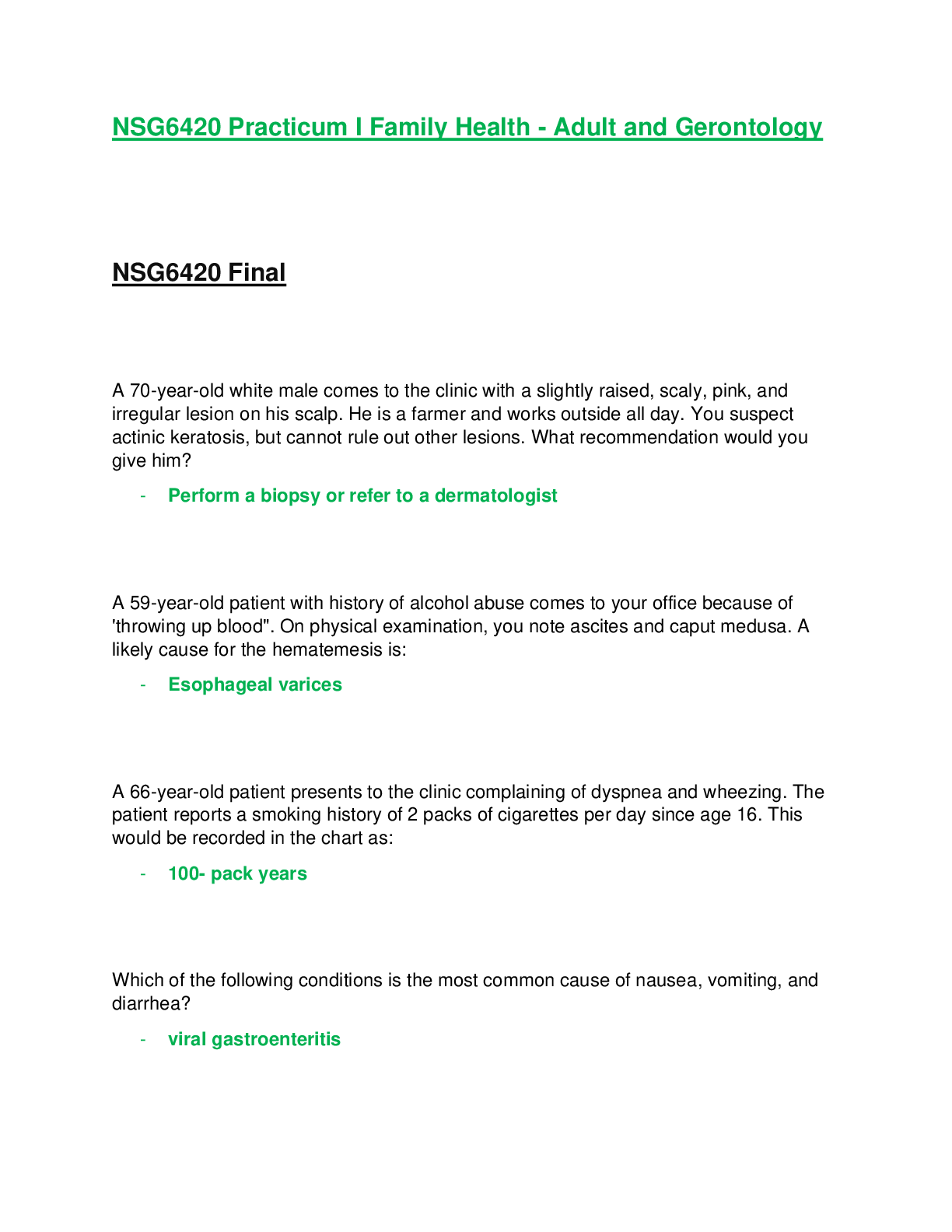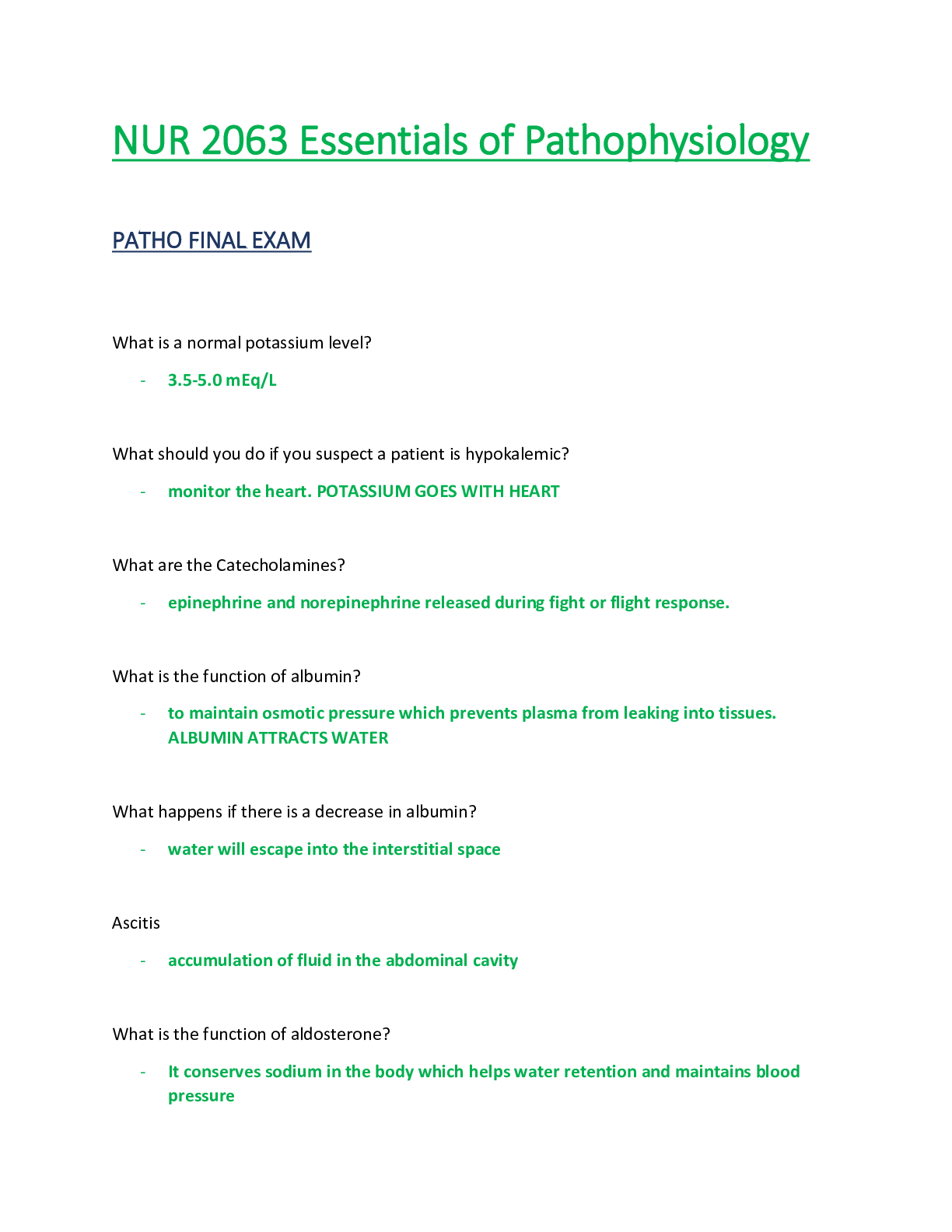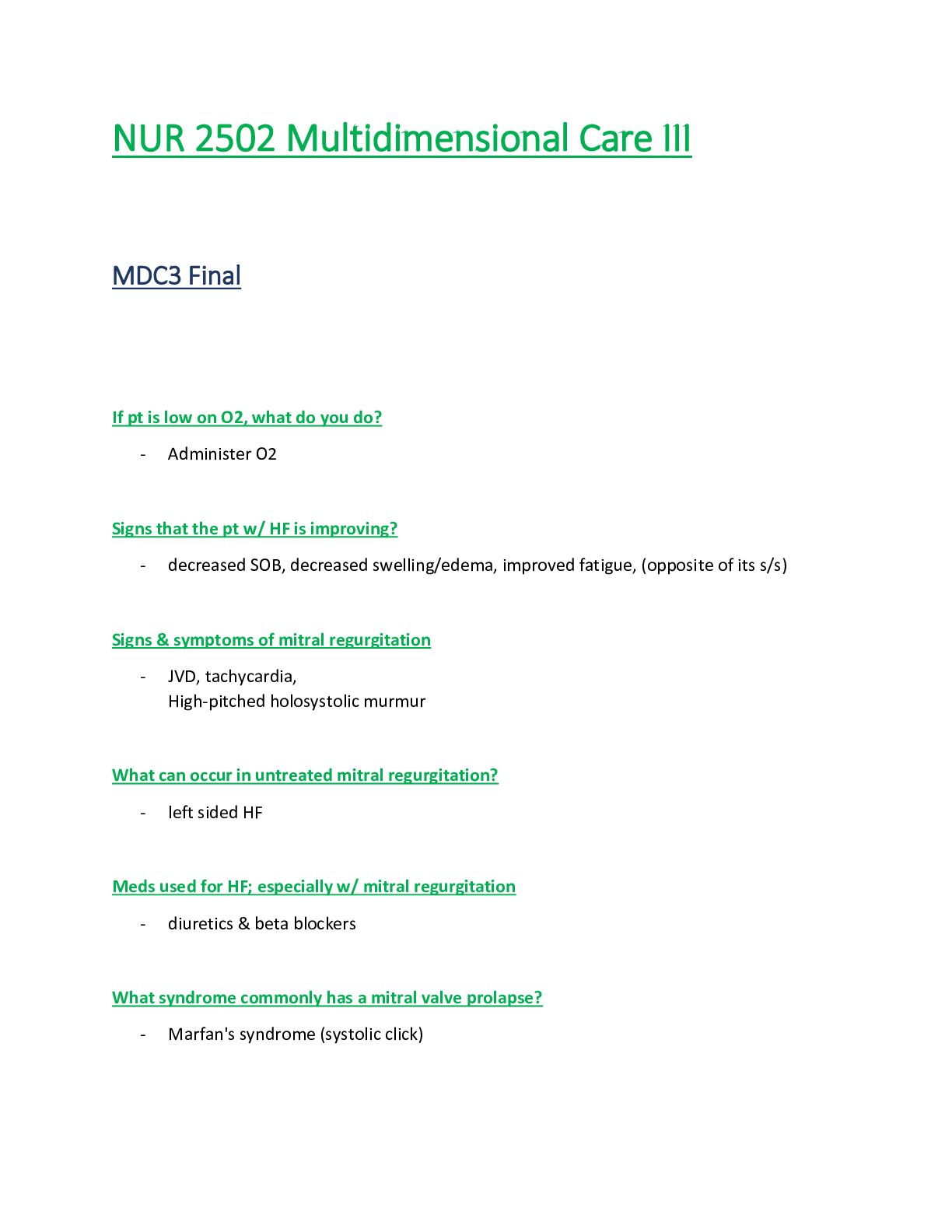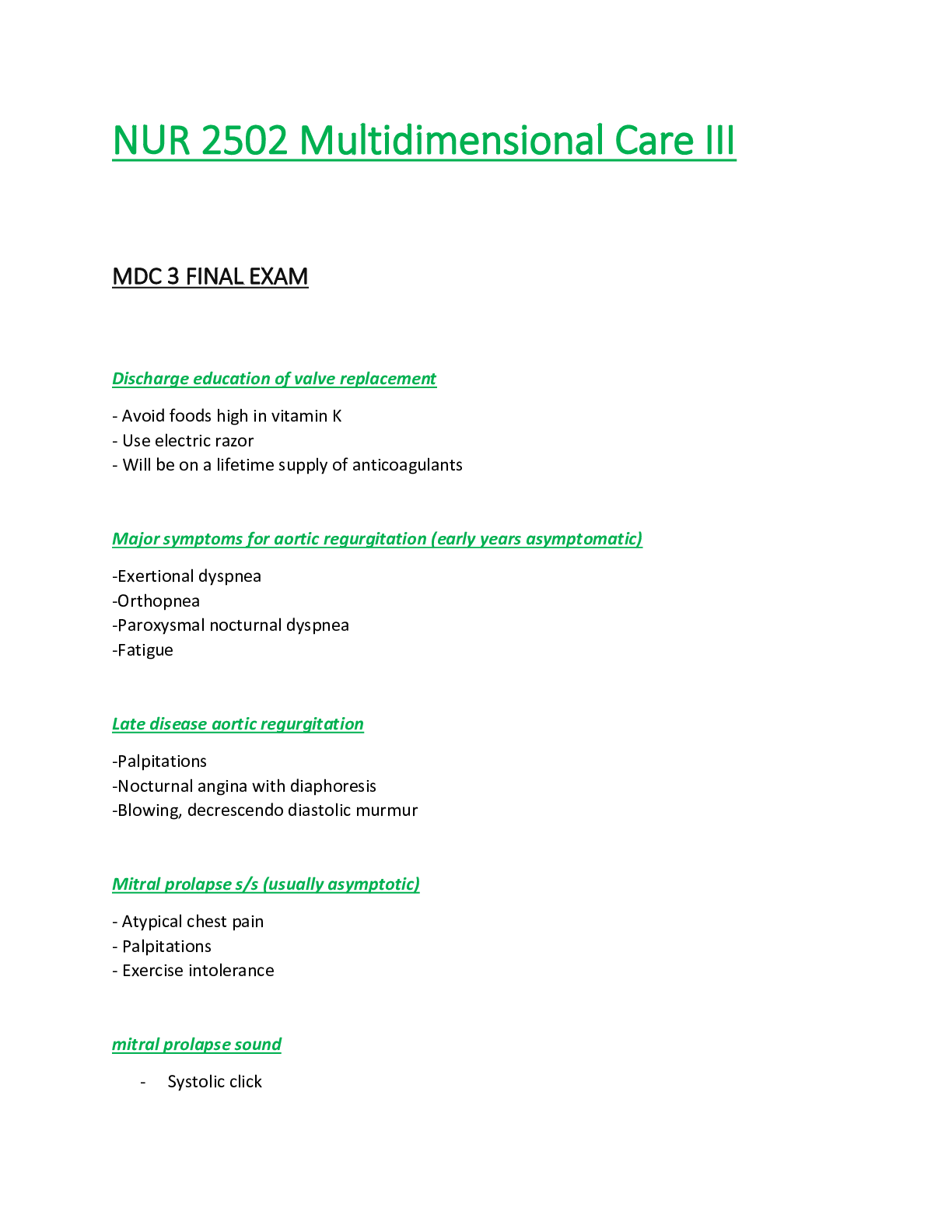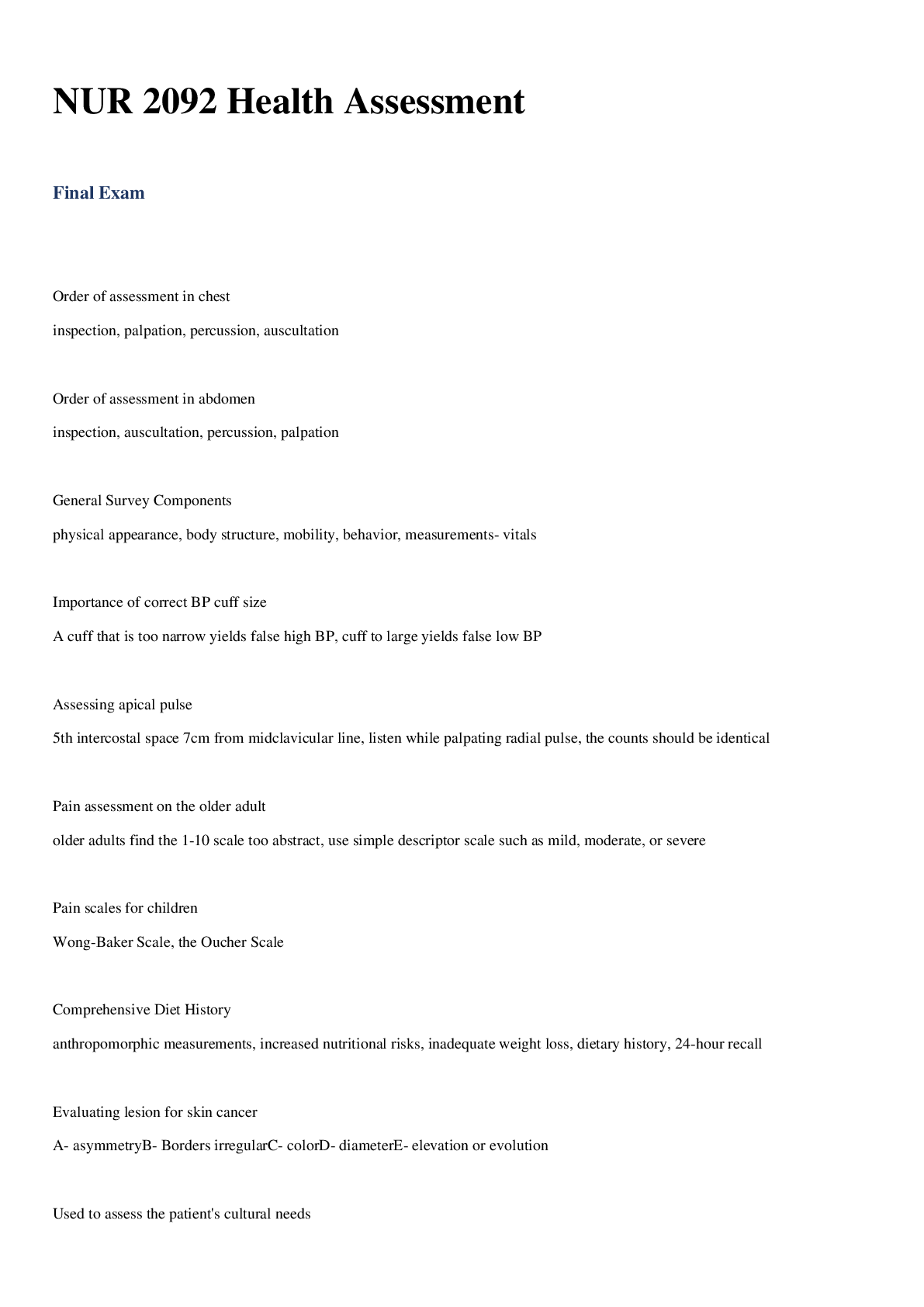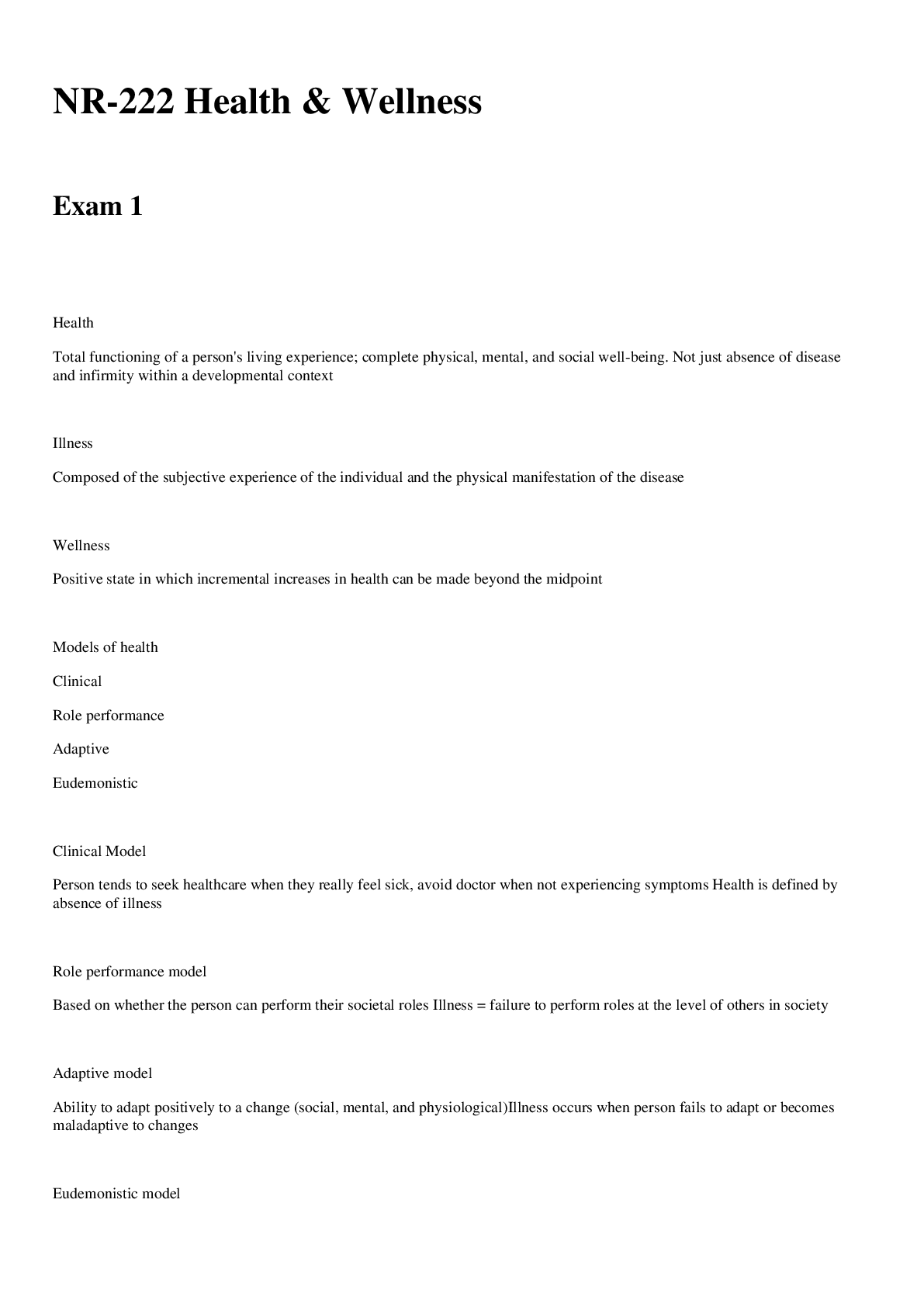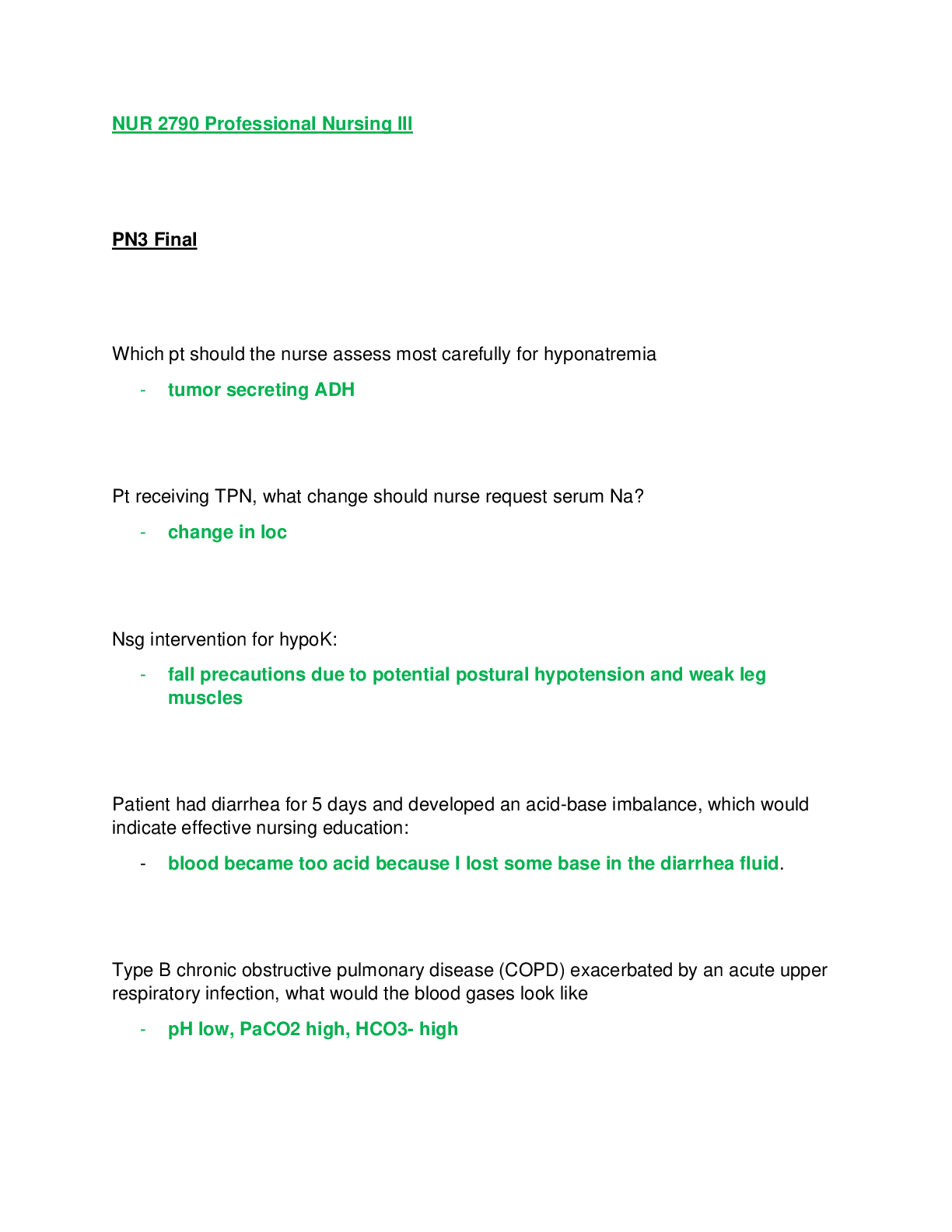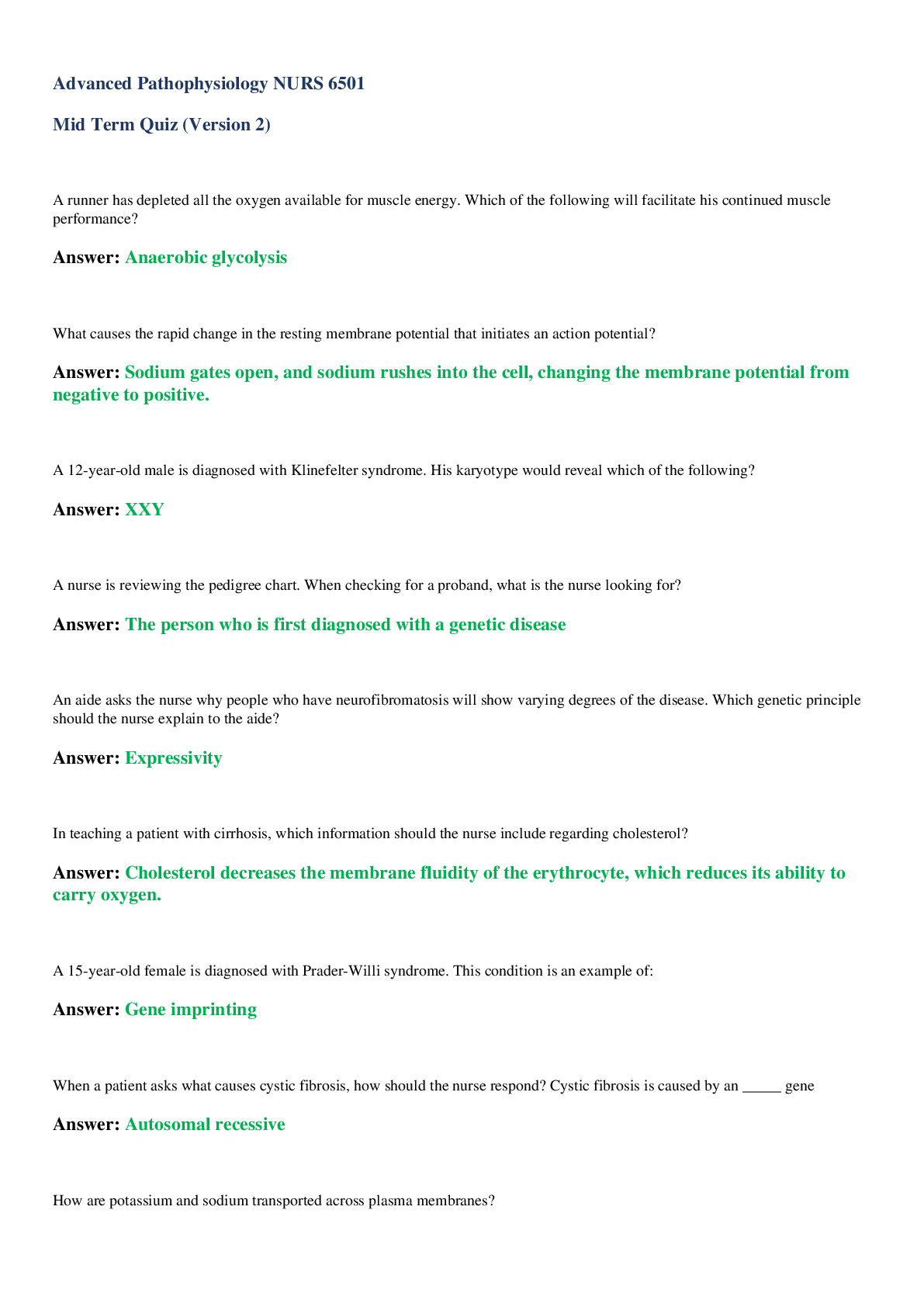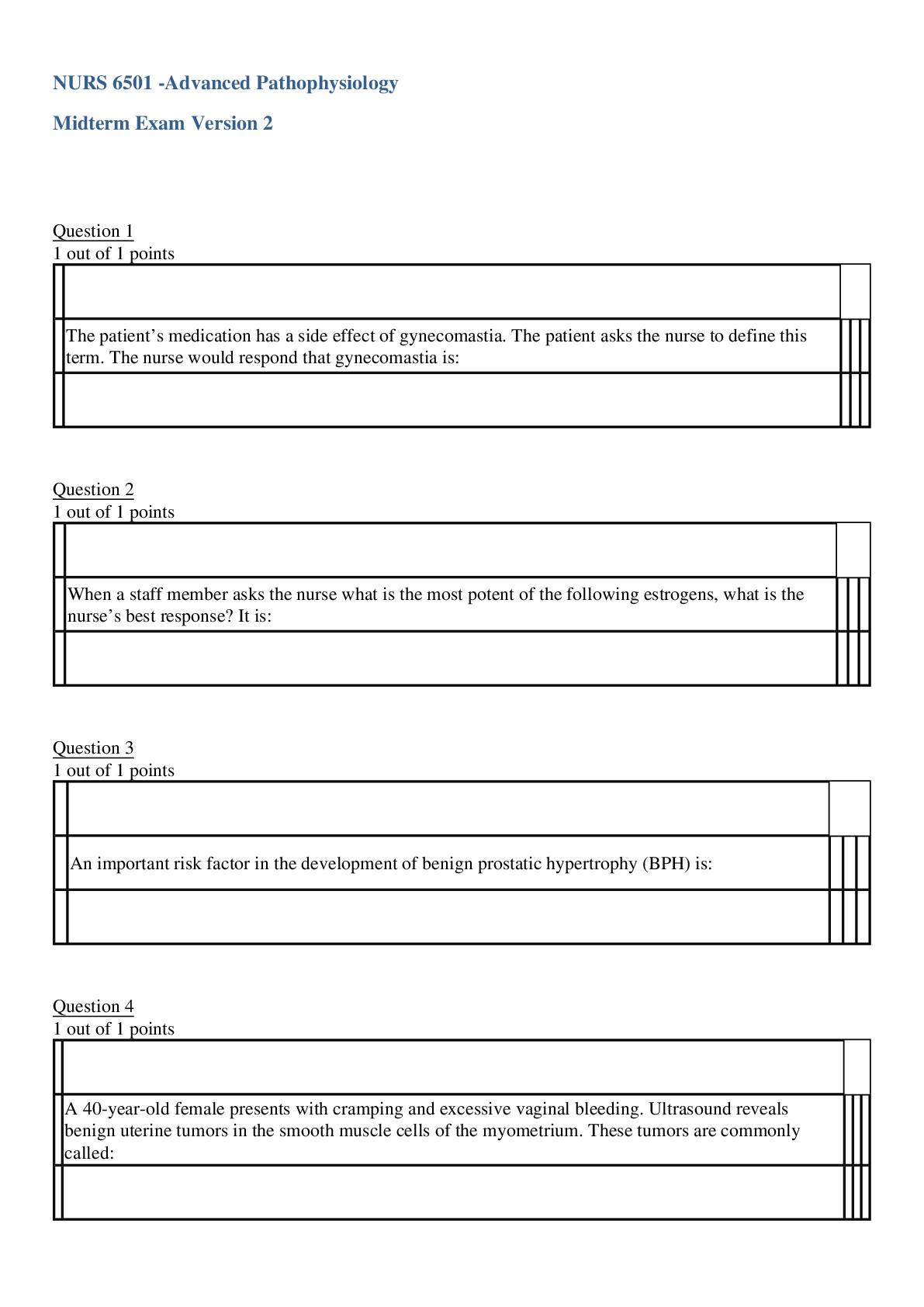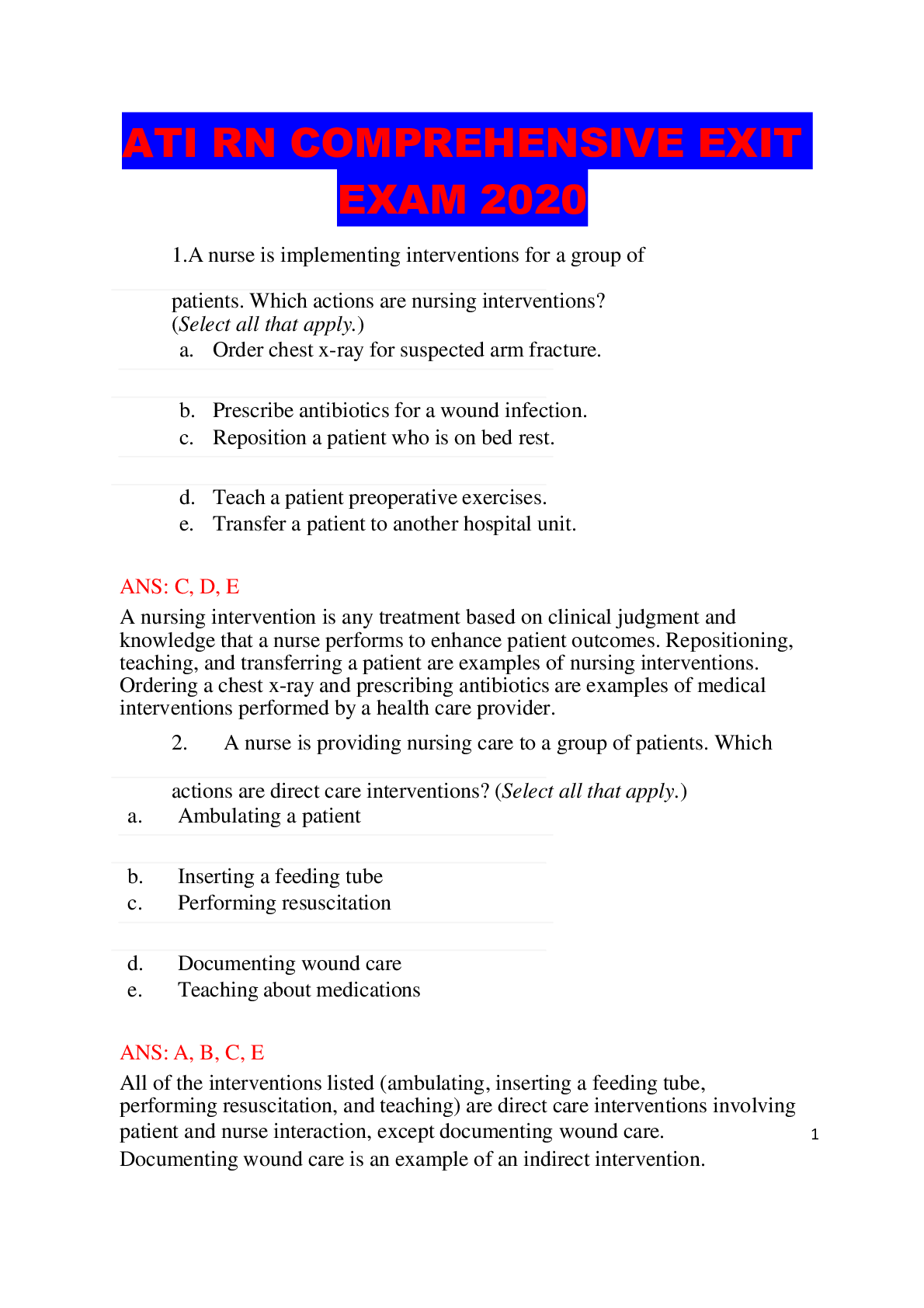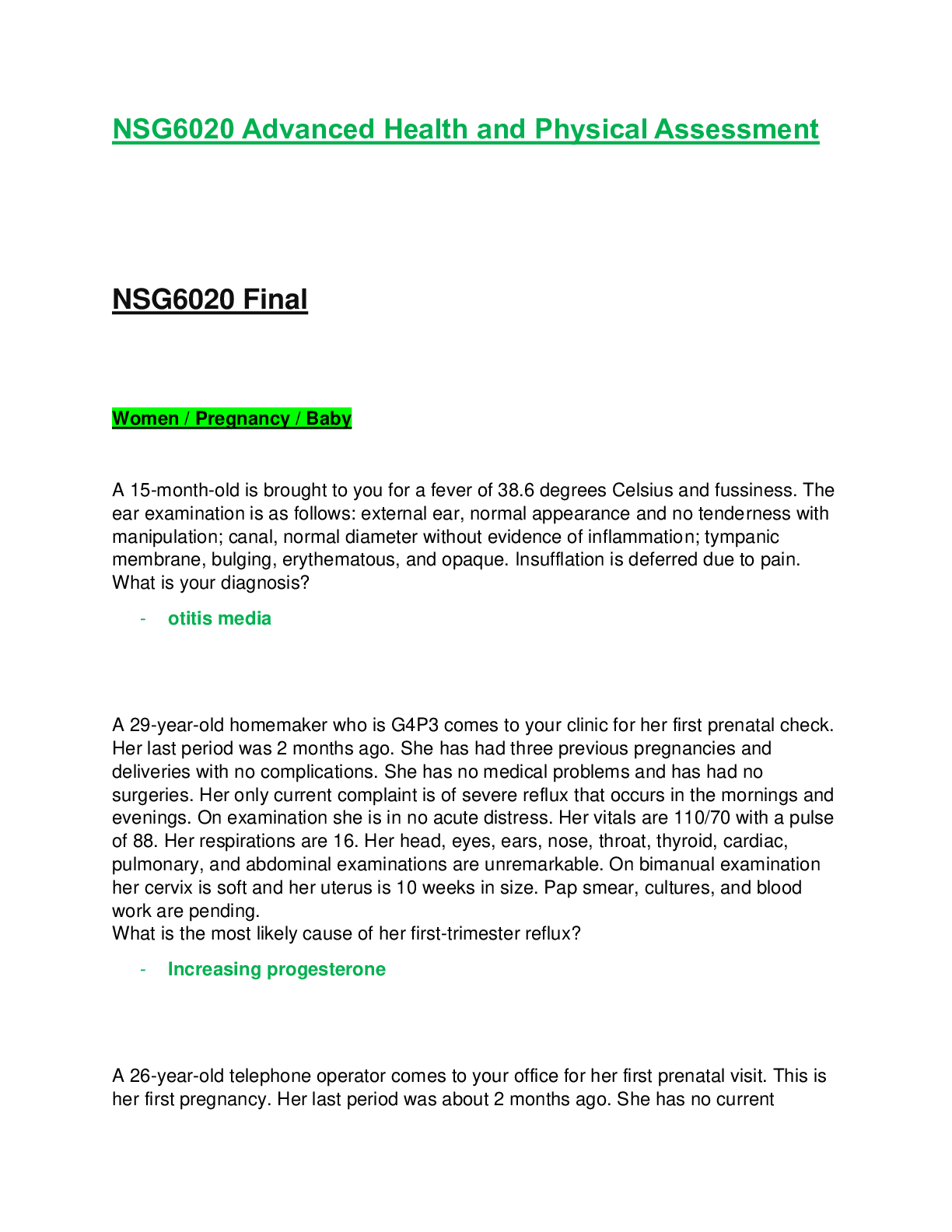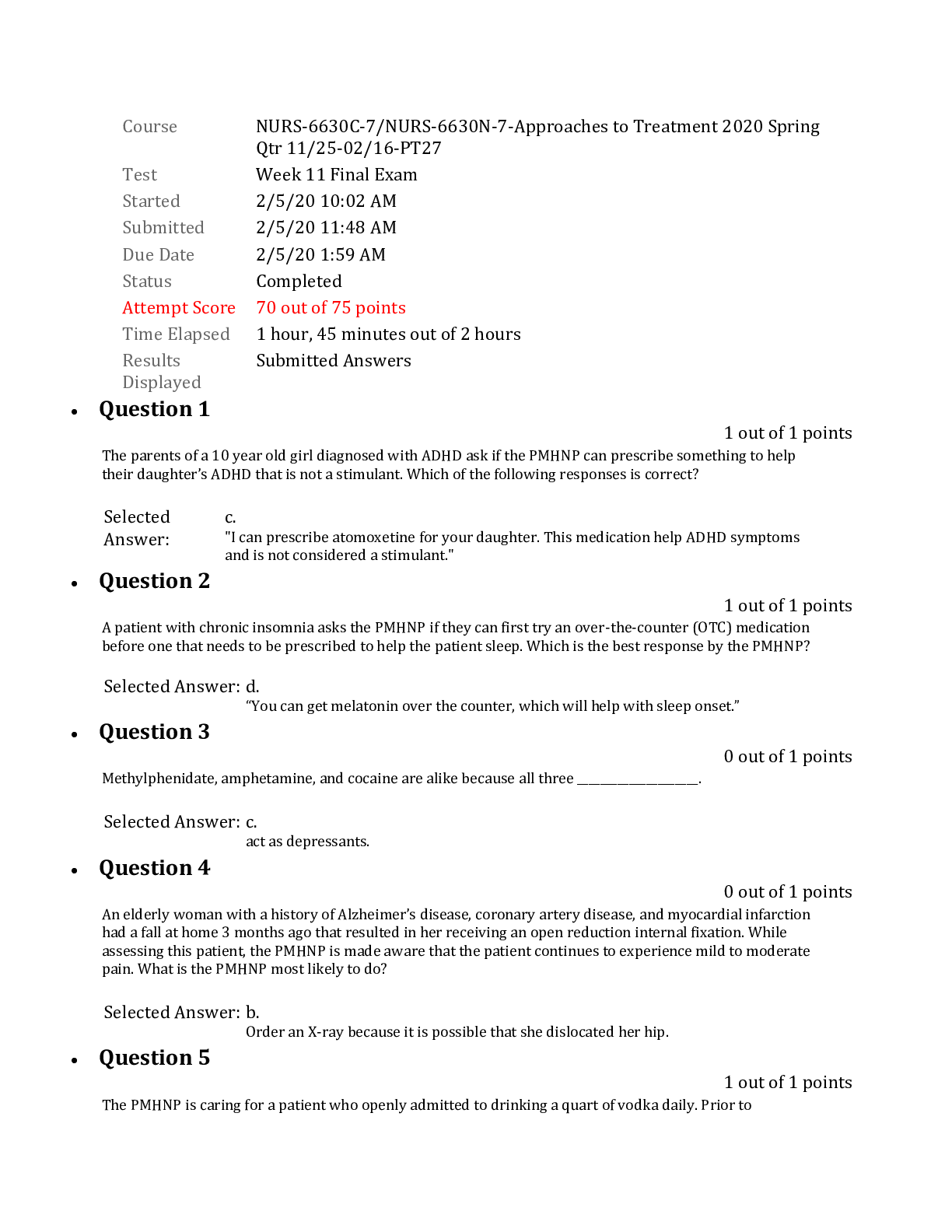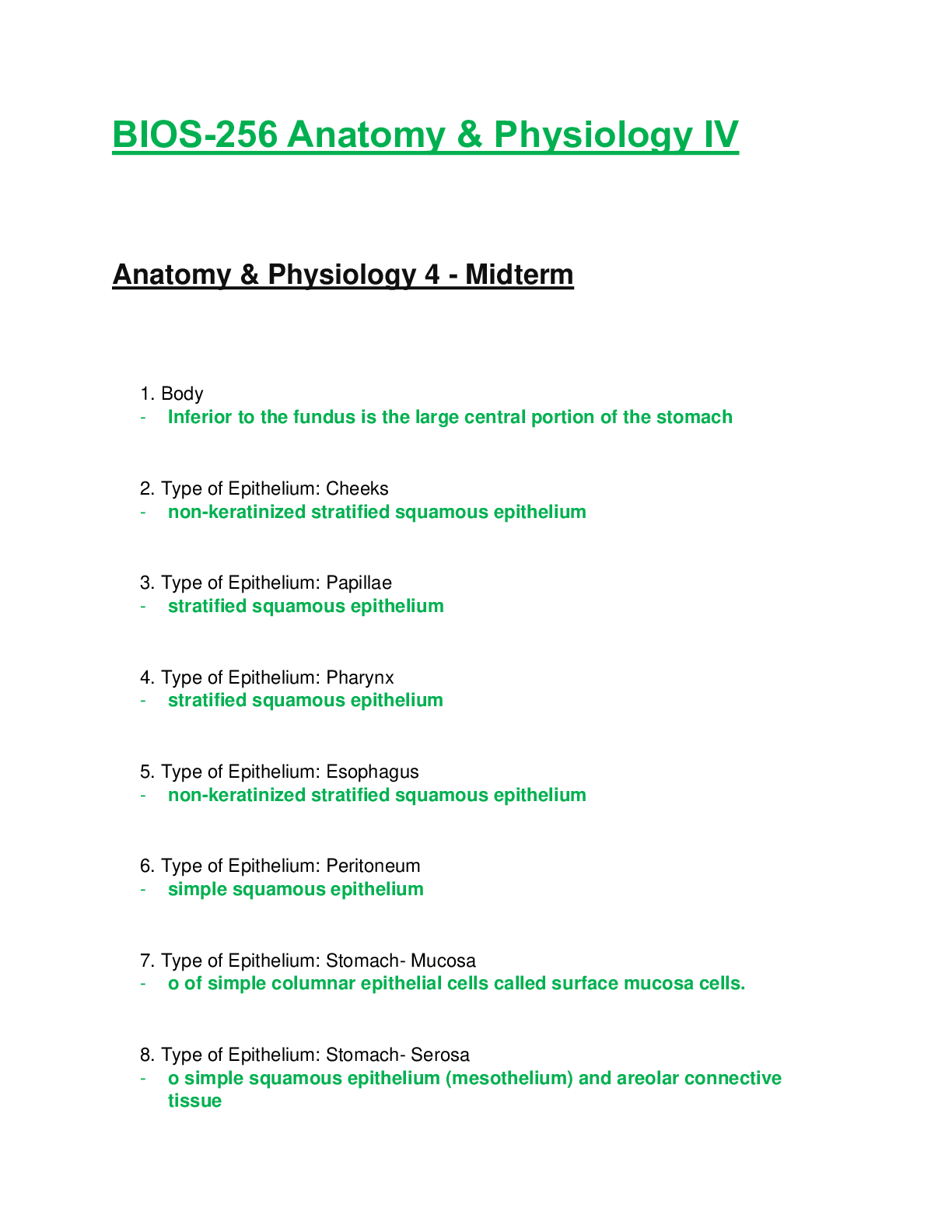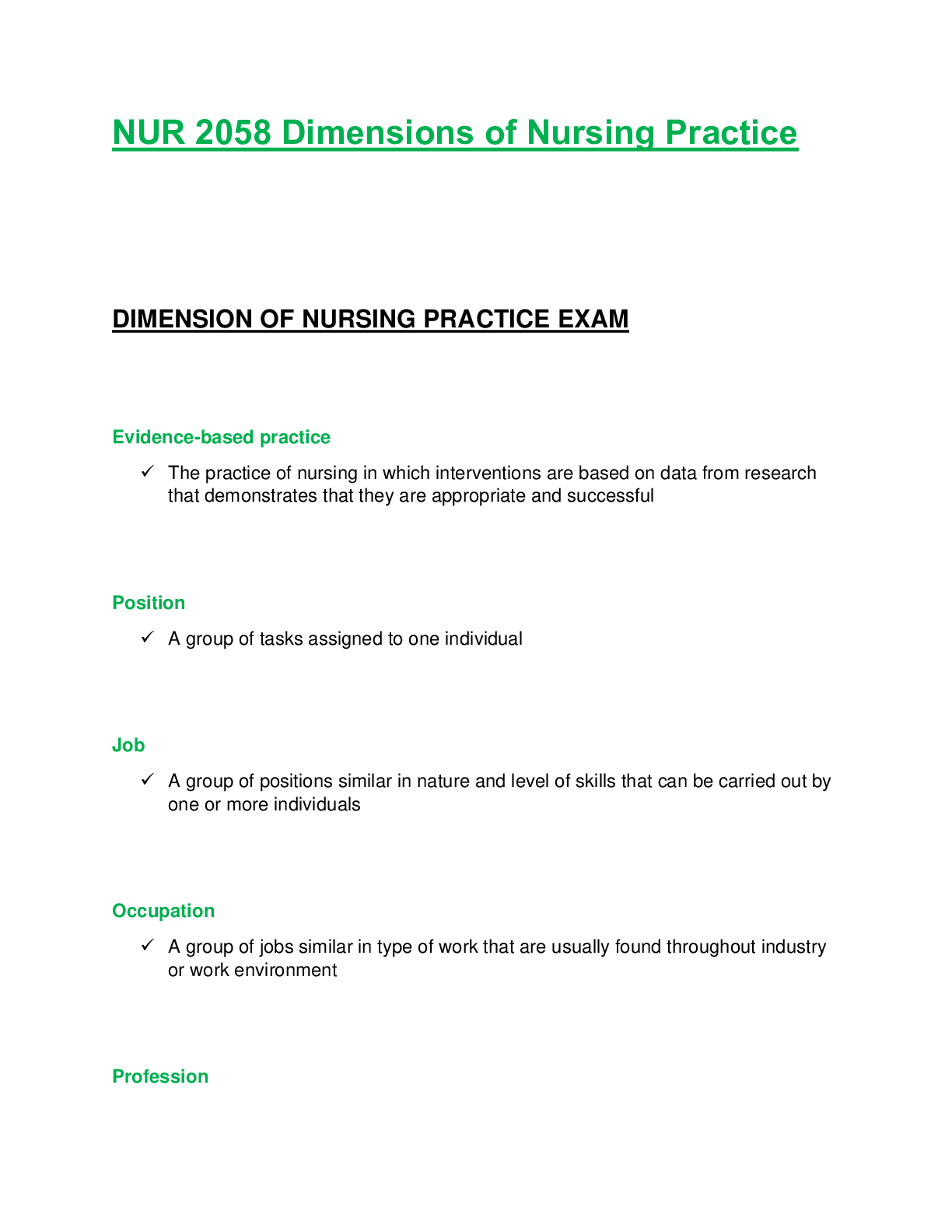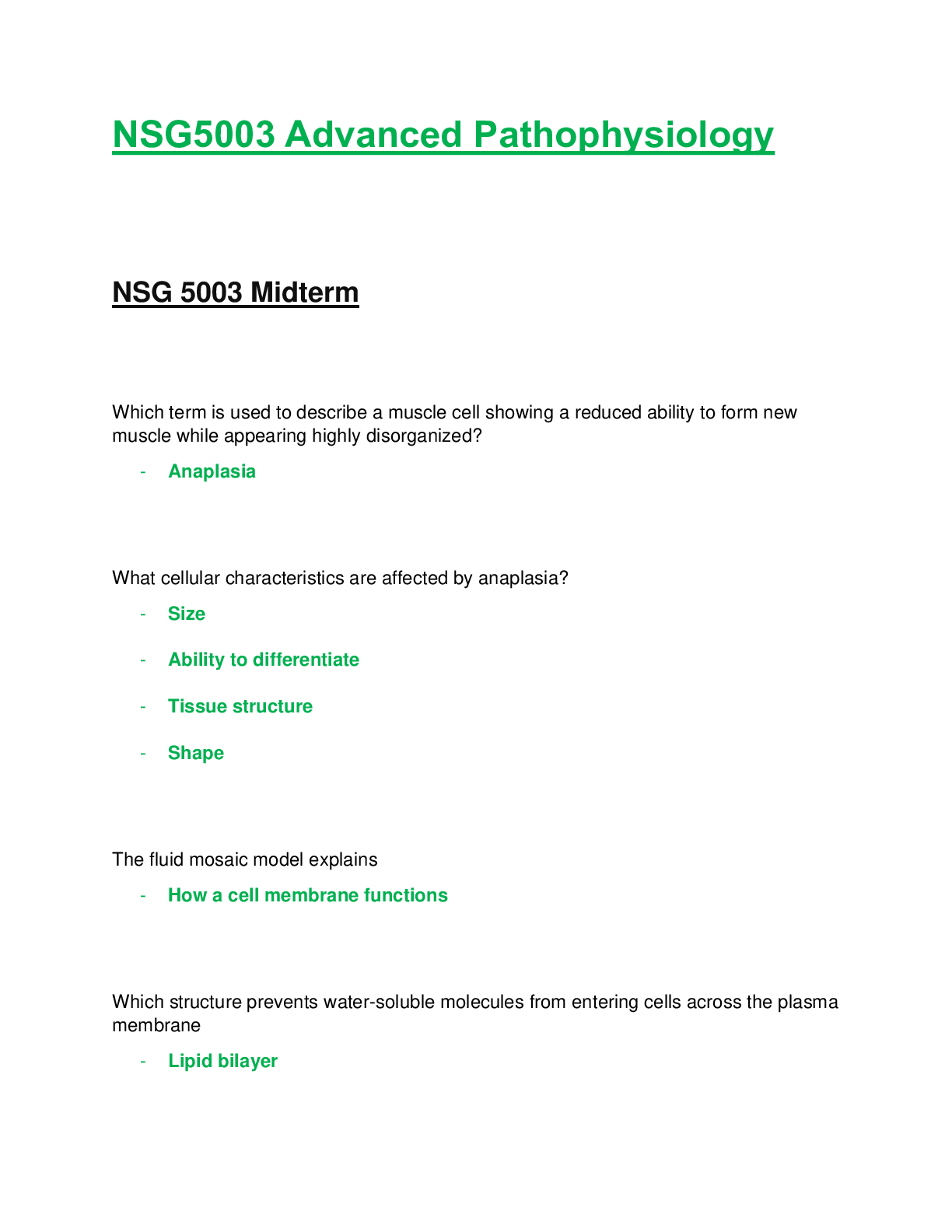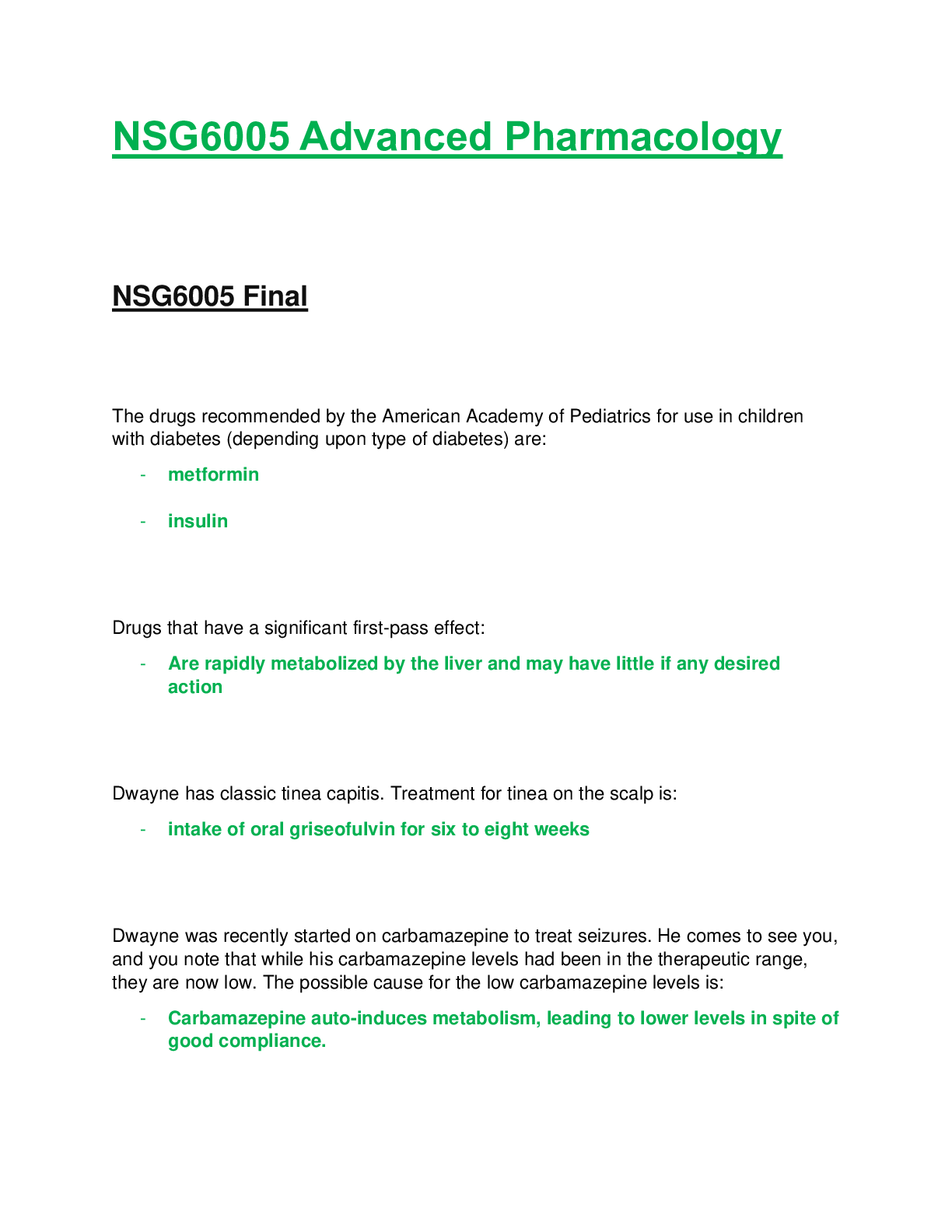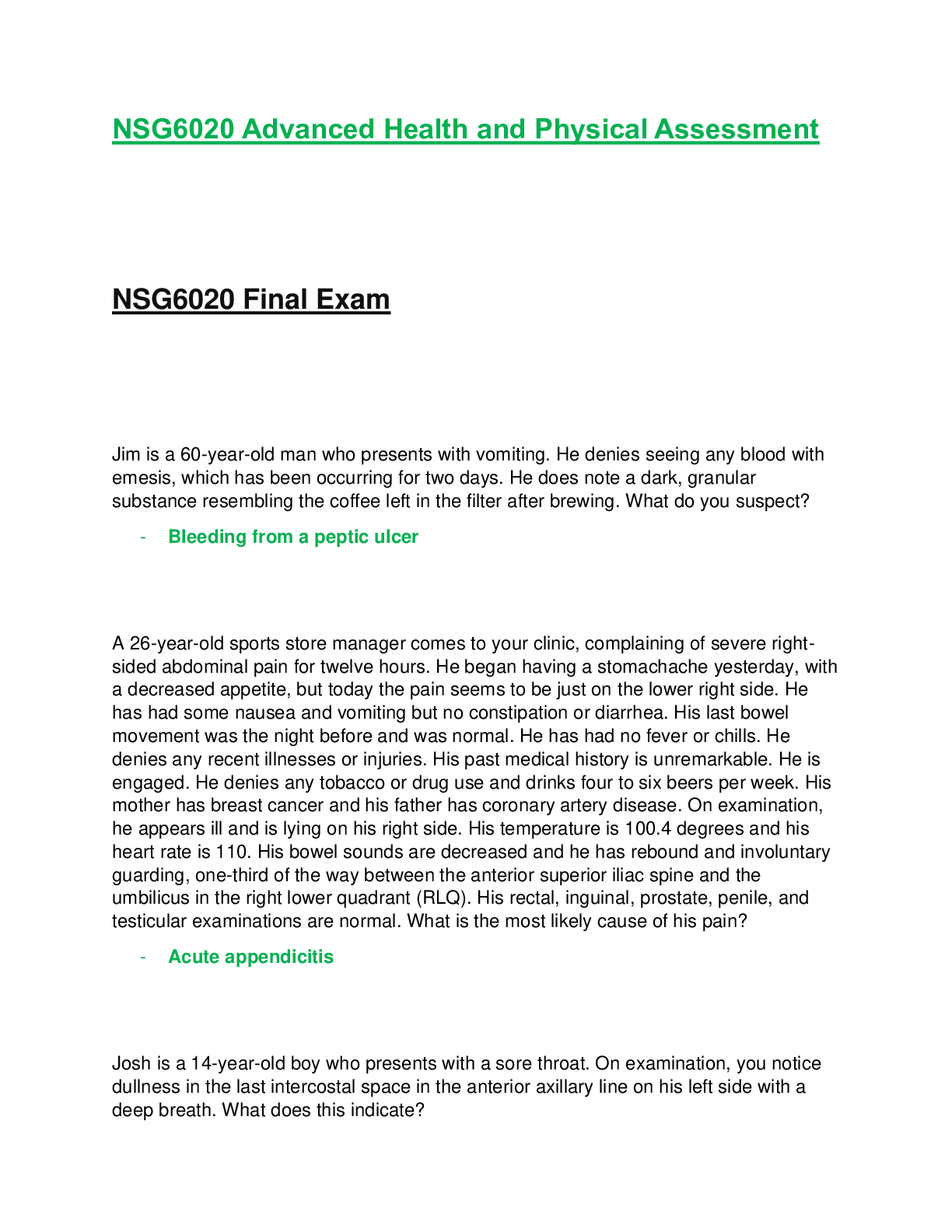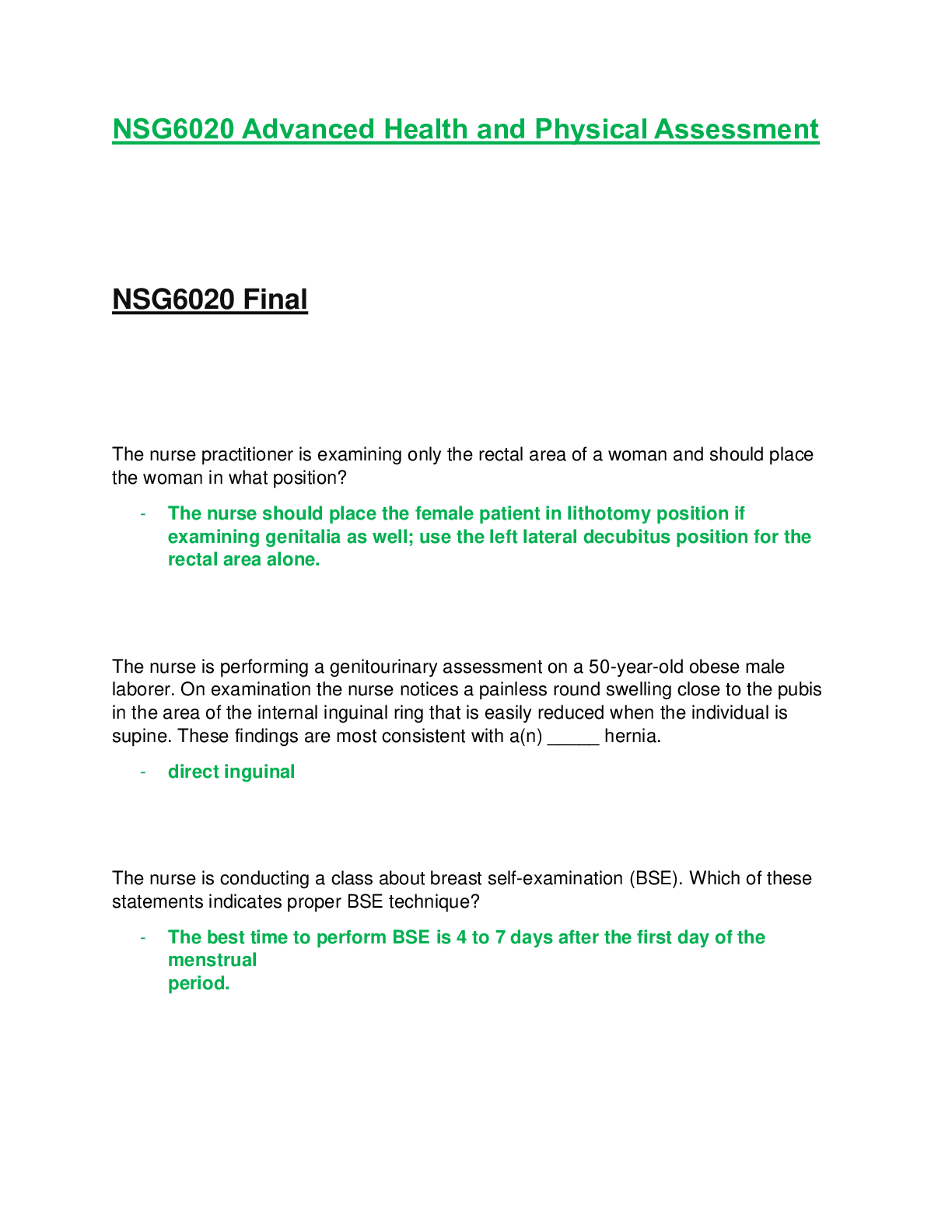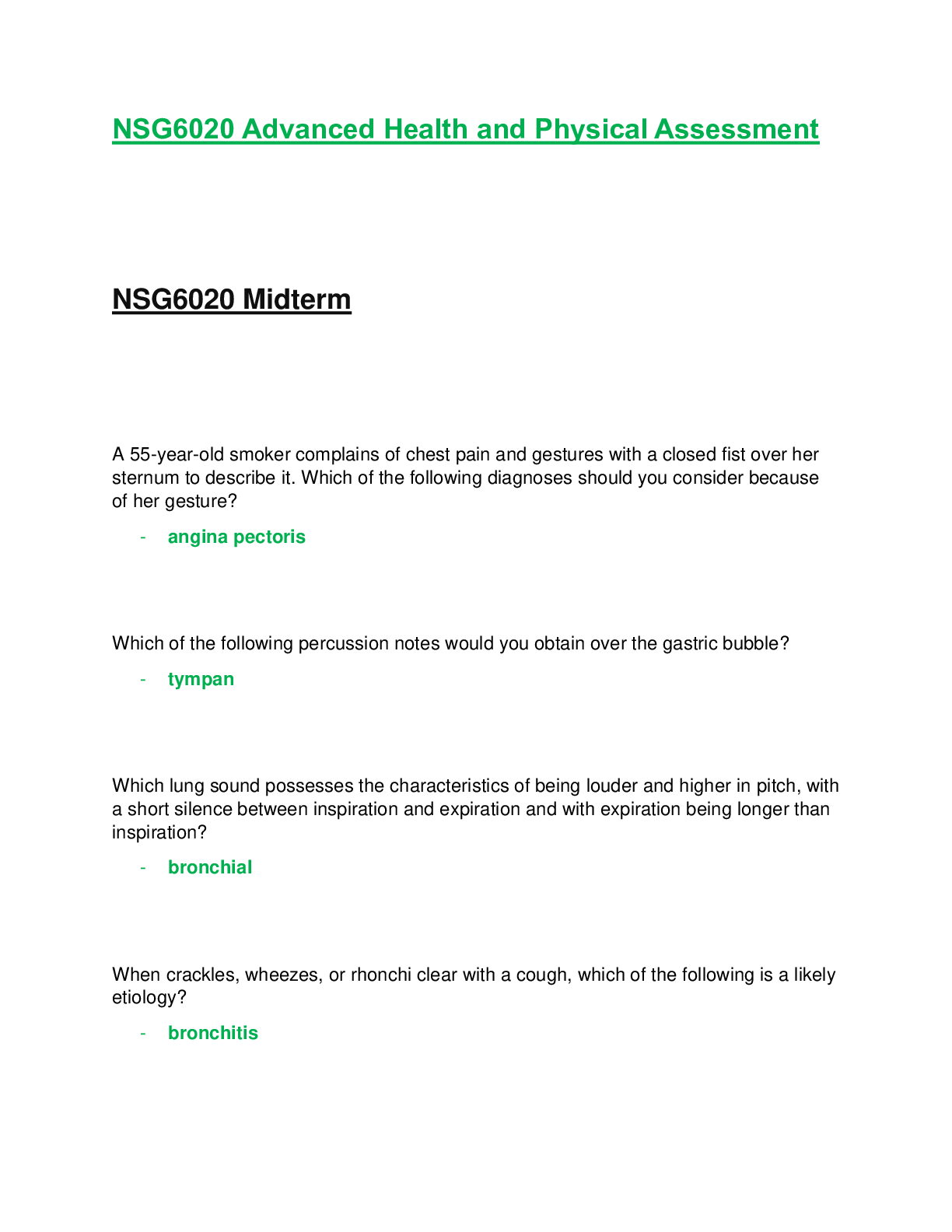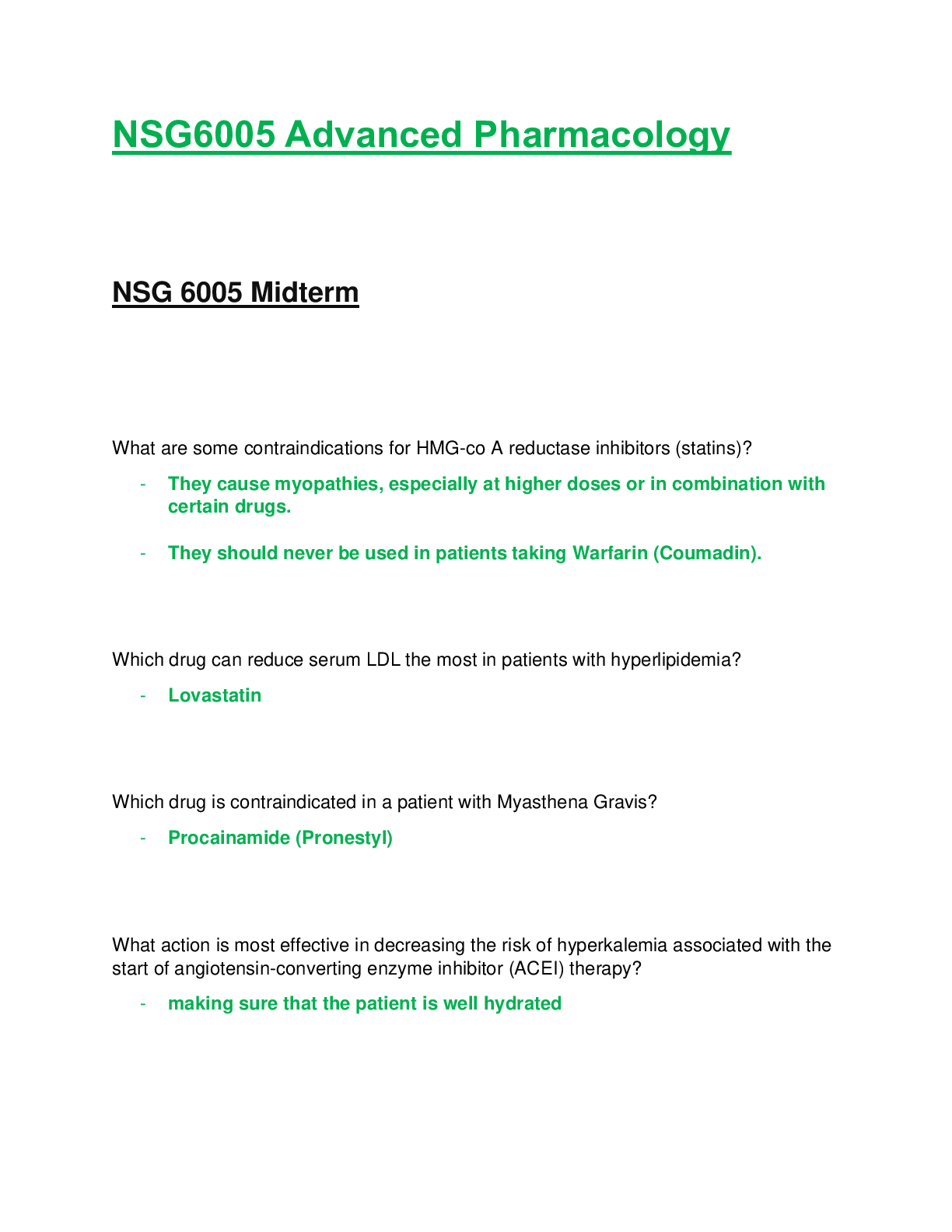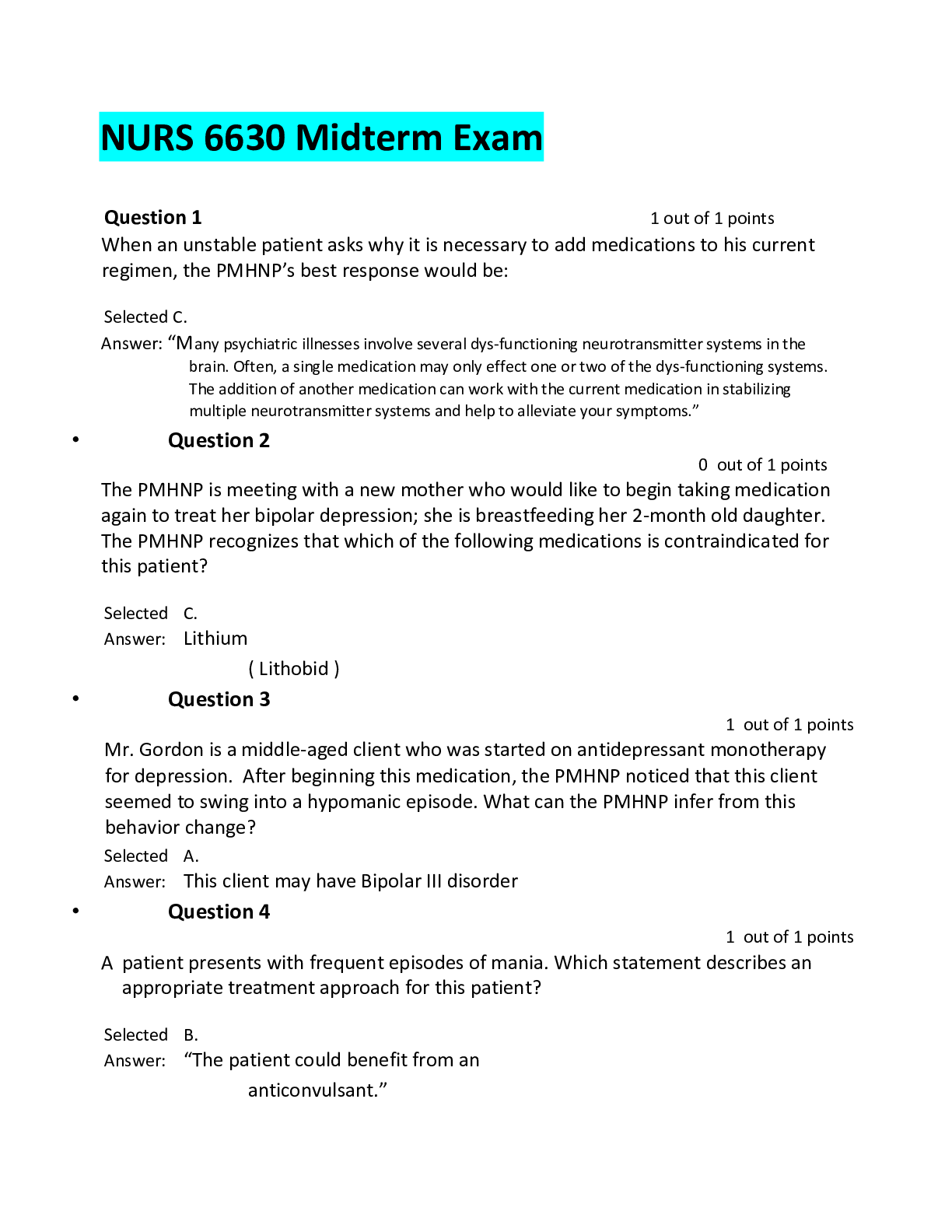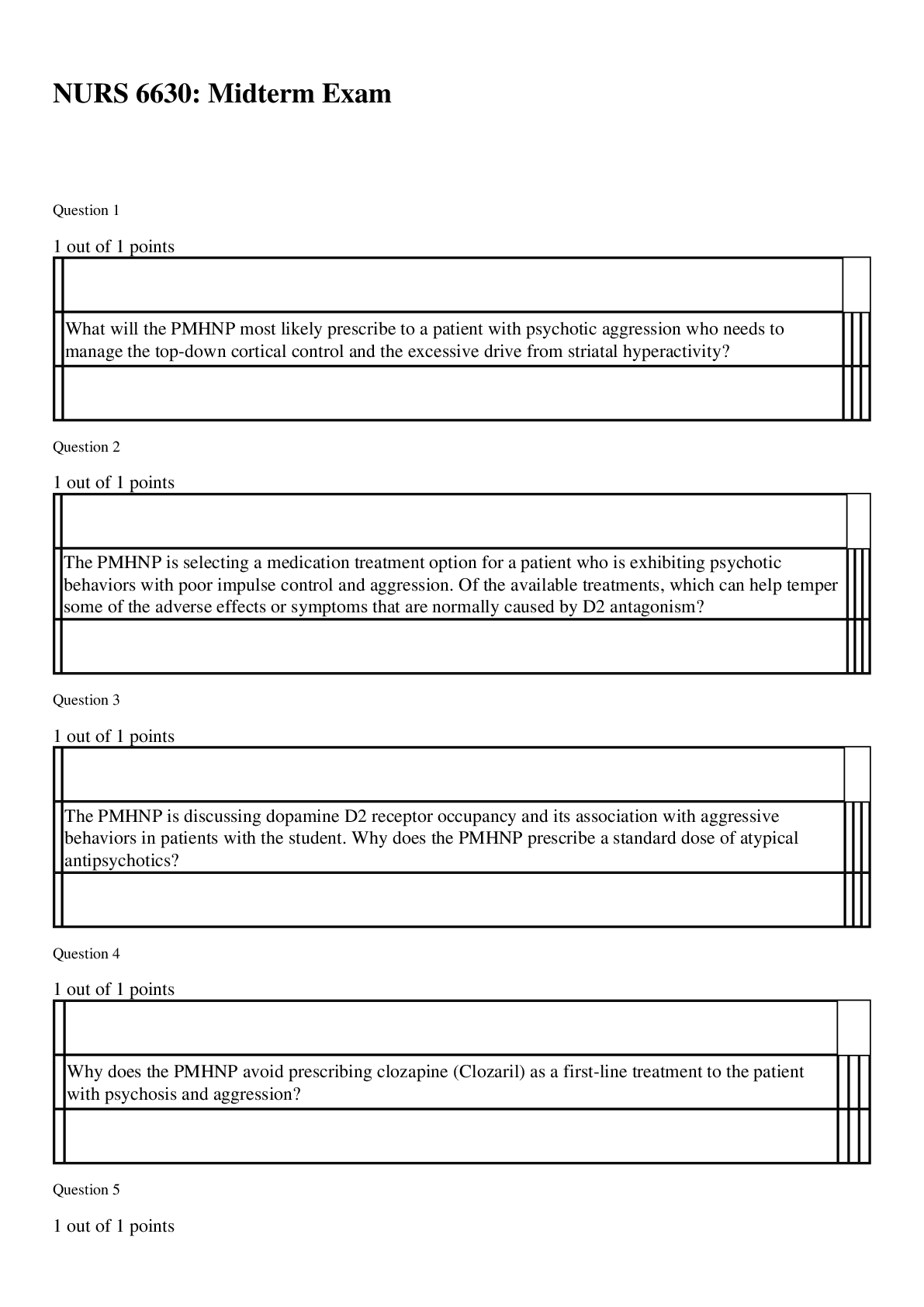*NURSING > EXAM > NURS 6630 / NURS6630: Psychopharmacologic Approaches to Treatment of Psychopathology Final Exam Late (All)
NURS 6630 / NURS6630: Psychopharmacologic Approaches to Treatment of Psychopathology Final Exam Latest Update Walden University
Document Content and Description Below
NURS 6630: Psychopharmacologic Approaches to Treatment of Psychopathology Final Exam 1. 32-year-old Sally comes into treatment for health anxiety/hypochondriasis. She has not improved follow... ing a lengthy course of client-centered, supportive therapy where she and her therapist discussed her irrational fears of illness. What maintaining factors or safety behaviors might you assess for to understand her lack of progress? - Avoiding anyone who is sick/going places where people are sick - Escaping situations when someone is coughing/displaying sick behaviors - Hypervigilance/seeking reassurance from others 2. According to Lang's bio-informational theory, what is the mechanism of change in behavioral interventions? Briefly explain. - 3. According to Young (conclusion), what are key differences between Schema Therapy and traditional short-term cognitive therapy. (six) - 4. Both a cognitive therapist and a behavior therapist might have an OCD patient refrain from washing his hands while handling "contaminated" items. How do these therapists conceptualize the rationale for and the effect of this intervention differently? - 5. Briefly define/explain therapist non-adherence and patient-non-adherence. - 6. Briefly describe DBT "irreverent communication strategies" - 7. Briefly describe one (1) strategy or technique you might use to help orient a patient to his/her values. - 8. Briefly describe Relational Frame Theory (using the spit/saliva metaphor or the GLORG metaphor) - 9. Describe 3 potential treatment targets (1 paragraph each) a therapist might use to modify a client's tendency to cancel appointments when in crisis and harm herself/threaten suicide. Be sure and list 1 target you might target from a cognitive therapy perspective, one from a behavior therapy perspective, and one from an emotion-based therapy perspective (DBT or ACT). - 10. Explain the 3 types of self in ACT thinking - 11. Give an example for each of the 3 Schema Processes described by Young - 12. List and briefly explain 5 reasons case formulation is important • 13. List, describe and give one example each for the three levels of cognitions that might be operating in depression/low self-esteem - - 14. List the 3 characteristics of cognition in Personality Disorders, according to Young - 15. List the 7 DBT treatment assumptions? - 16. Summarize the Bio-Social Model of DBT - 17. Summarize the key points regarding monitoring progress (Persons). What, when and how should a therapist monitor during treatment? - 18. Walk a hypothetical client through the ABCDE process of ACT - 19. What 3 polarities, found in patients, make progress difficult in DBT - 20. What are key questions one should consider when prioritizing the problem list for treatment (8 total)? - 21. What are the 5 functions of treatment in DBT? - 22. What are the main goals of treatment in DBT Stage 1? (provide examples) - 23. What are the qualities of good treatment goals? - 24. What are ways that cognitive challenging might actually make things worse? (five) - 25. What rationale for obtaining a problem list as a starting point of a formulation does Persons provide? - 26. What strategies might be used to improve homework compliance in DBT? - 27. Young describes 5 Broad Schema Domains. Lists these and briefly describe one example of an early maladaptive schema for each domain. (DIIOO) Disconnection and rejection - [Show More]
Last updated: 11 months ago
Preview 1 out of 6 pages
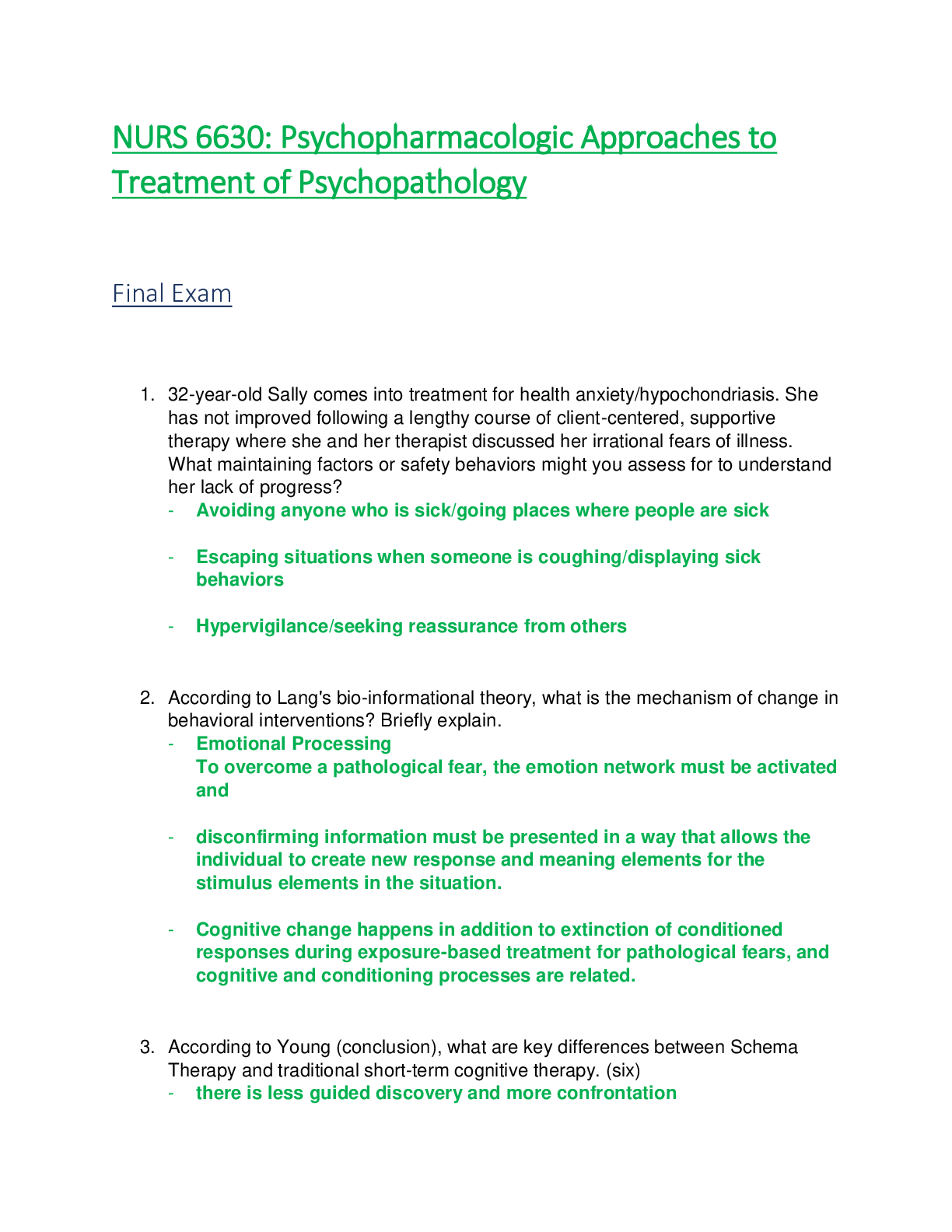
Reviews( 0 )
Document information
Connected school, study & course
About the document
Uploaded On
Nov 09, 2020
Number of pages
6
Written in
Additional information
This document has been written for:
Uploaded
Nov 09, 2020
Downloads
0
Views
32

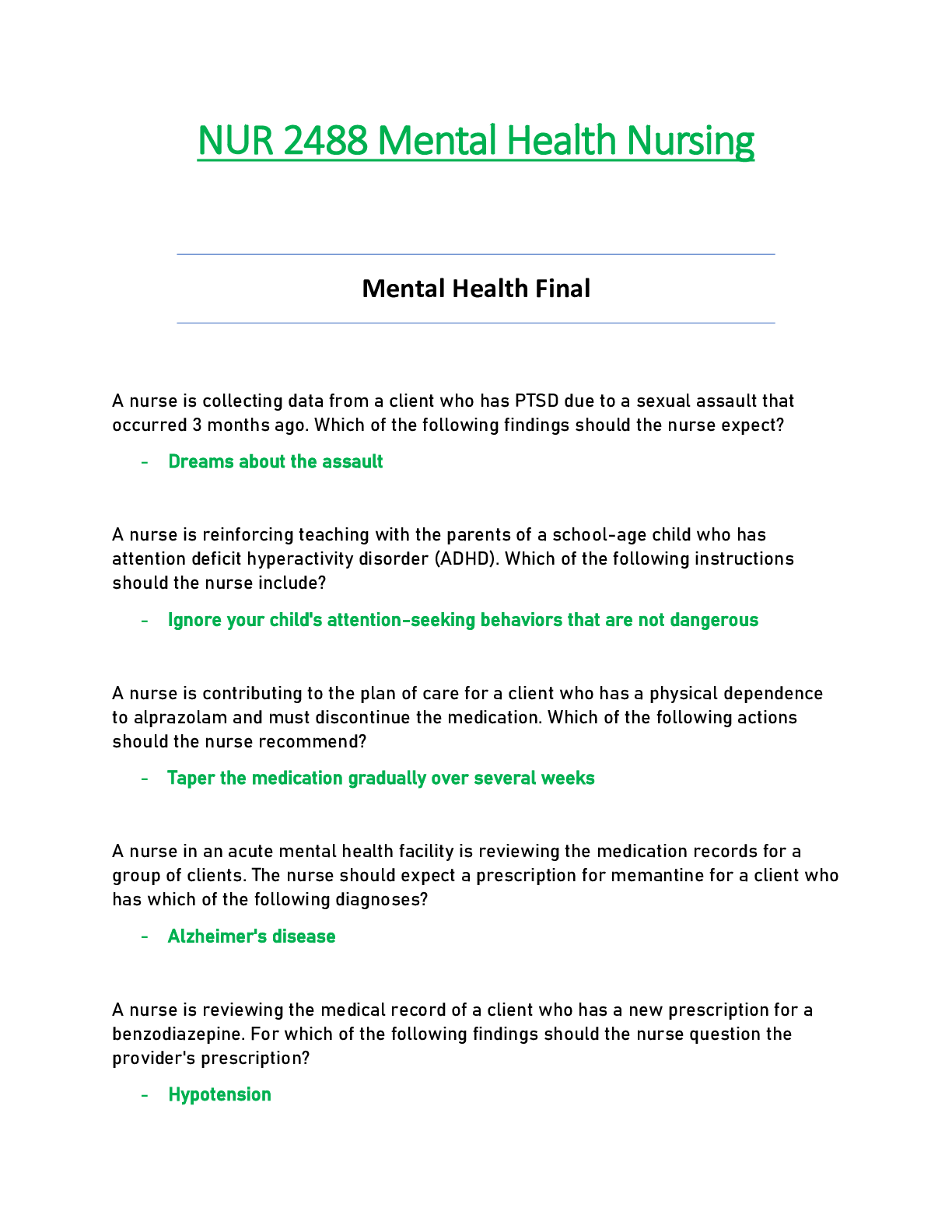
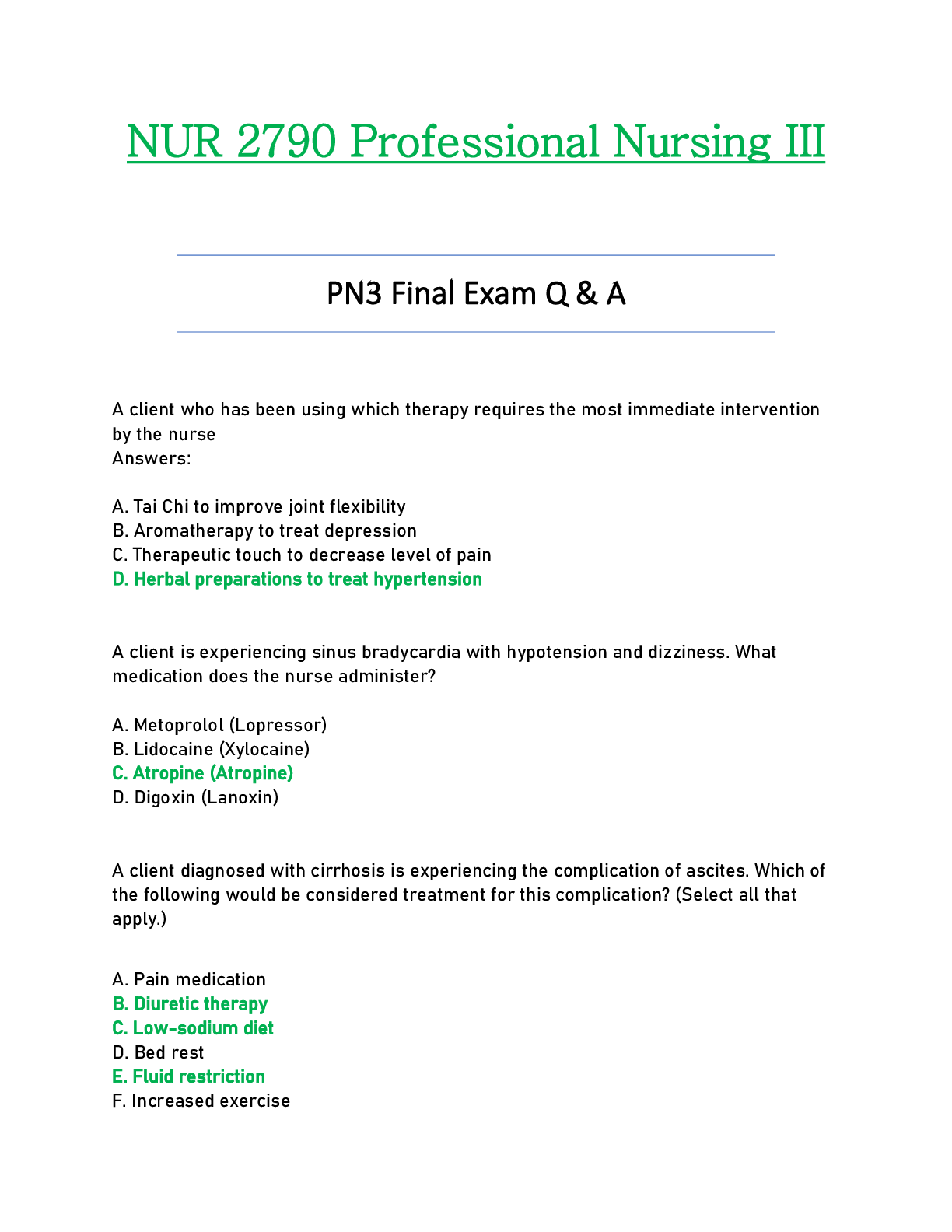
.png)
